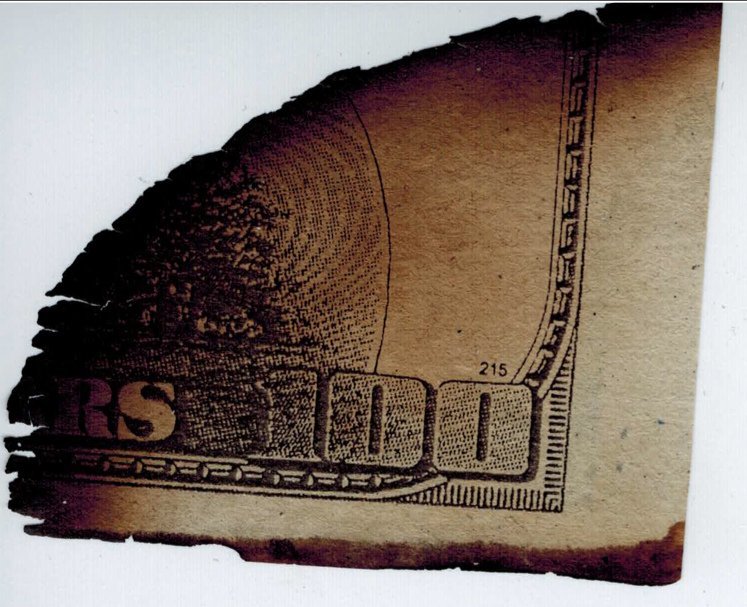Forbes – Most people have a basic idea that inflation is when prices rise, and that this is caused by an increase in the money supply. Since the Federal Reserve is rapidly increasing the money supply, it is only common sense to expect this will hurt us sooner or later. It is absolutely wreaking havoc, though not how you might assume. A simplified idea of inflation is good enough for casual conversation. However, to see what quantitative easing is doing to us requires a more precise understanding.
Inflation is, at root, a monetary fraud.
It helps to understand the dollar, before building the fraud case. The dollar is a debt. Did you ever wonder why we call it a dollar bill? Bill is an old word for a certificate showing that money is owed. On the paper dollar, they don’t print “bill” but “Federal Reserve Note.” Noteis another word for money owed. The dollar is a debt owed by the Fed.
The Fed is a bank, and like any bank it must have an asset to match every liability. So long as it owns a dollar’s worth of good assets for every dollar it owes, then the Fed is solvent. However, if its assets fall below its debts, then the market will not accept its currency.
The lion’s share of the Fed’s assets is the US government’s debt—Treasury bonds. Yes that’s right, the government’s debt is its central bank’s asset. If you are picturing Uncle Sam’s purse owing money to his billfold, that is about it. Incredibly, the billfold counts the purse’s promises to pay as an asset.
The system holds together so long as Uncle Sam is servicing his debt. This is not in jeopardy in the near future, but debt default is inevitable. The sad reality is that the government has no means to repay it. The issue is not simply the sheer size, though 17 trillion is certainly an alarming number. Nor is it just the lack of discipline of our political class, though they certainly love to spend. The debt itself is inherently bad.
In my last column, I said that lending and borrowing literally built our civilization. Let’s first look at this kind of borrowing and then at how government debt differs.
Many startups borrow money to start or grow their businesses. In 1977 Steve Jobs used a $170,000 loan to launch Apple Computer. This money was well invested, and helped build an enduring powerhouse. Apple made its founders and their investors very rich, and improved the lives of billions of people globally.
A loan transfers capital from lender to borrower. This enables the borrower to immediately consume resources that it does not own—the lender’s resources. In exchange, the borrower promises to return these resources in the future and a bit more as interest.
It works so long as the borrower uses the capital to produce something new. New production generates new profits. These profits are enough to pay back what was borrowed plus interest, and enough for the borrower to make money too.
If the borrower does not increase production, then it must default sooner or later. This is because it has no means—no profits—from which to make payments. This can happen through honest error, when an entrepreneur miscalculates the market opportunity for his new product. Unfortunately, there are also criminals who do it on purpose. Bernie Madoff wasted investors’ money on his lavish lifestyle, producing nothing. Criminal schemes like that always collapse.
This unfortunately describes the US government. Some of its borrowing does finance new production, but the bulk is consumed. Like Madoff, the government has no way to repay, though it can keep its scheme going far longer. It can borrow fresh money to pay off old debt as it matures, but the scheme must inevitably collapse.
Borrowing without the intent to repay is not really borrowing at all. It’s fraud.
The Fed buys the government’s fraudulent bonds, issuing dollars to finance these purchases. The Fed deceives us into accepting this bad paper as currency by making its new dollars look like real currency. This is the very essence of counterfeiting.
Inflation is the official counterfeiting of the currency. The consequences will be the total collapse of the people’s trust, along with the government’s bad bond and the Fed’s bad dollar.


:quality(75)/https://static.texastribune.org/media/files/c47cb8a836a3a61171d7ad02831649e4/Elon%20Musk%20VivaTech%202023%20TT.jpg?w=440&resize=440,264&ssl=1)
:quality(75)/https://static.texastribune.org/media/files/d431da7e82432598bb2a913a2d7b656c/0708%20Lubbock%20Public%20Pools%20AR%2009%20TT.jpg?w=440&resize=440,264&ssl=1)
![Chocolate Prices Set to Surge Amid Cocoa Supply Crisis [VIDEO]](https://i2.wp.com/austincountynewsonline.com/wp-content/uploads/2024/06/chocolate.jpg?w=440&resize=440,264&ssl=1)
:quality(75)/https://static.texastribune.org/media/files/480e214434ccc7208c13495fb0c23f46/RGV%20Citrus%20Freeze%20JG%20TT%2018.jpg?w=440&resize=440,264&ssl=1)